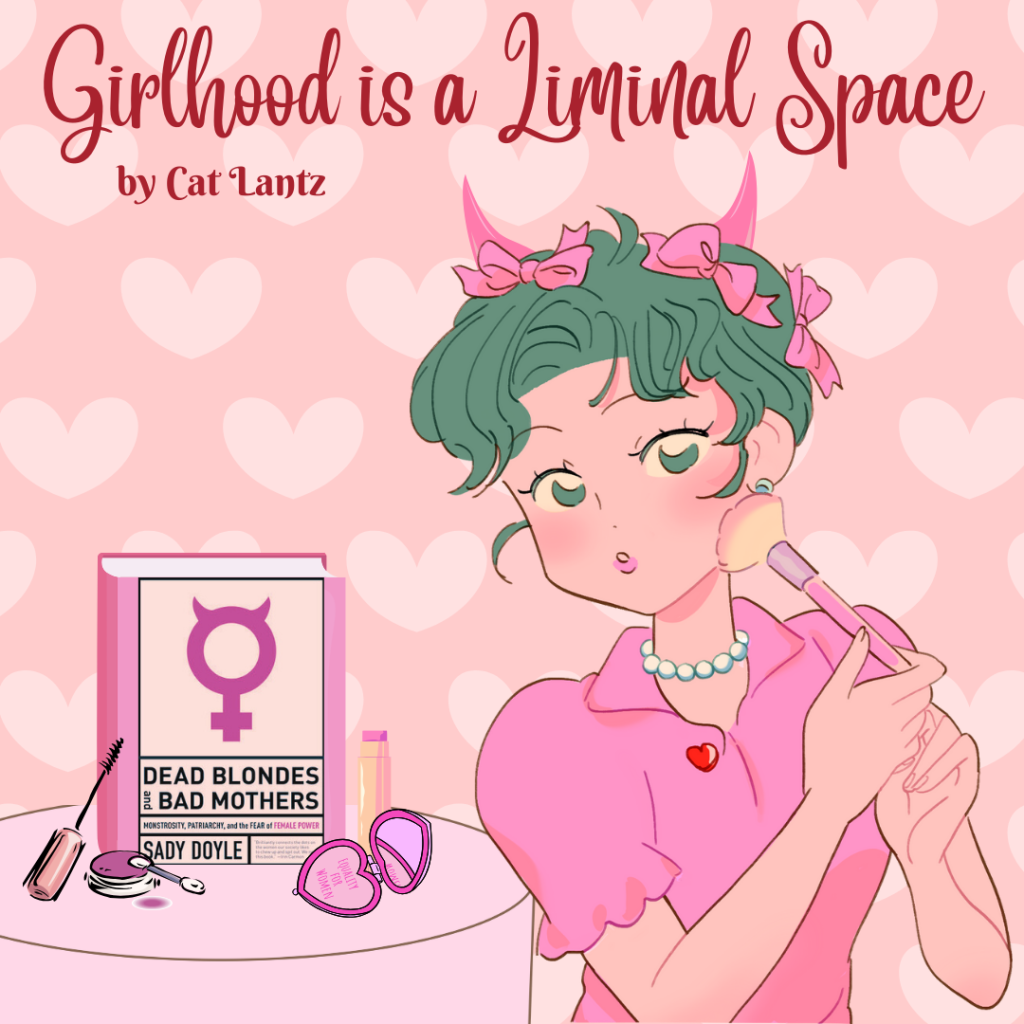A little girl is less a person than she is a portal. At any moment, she can crack open and something else can come slithering through.
Sady Doyle’s 2019 exploration of the monstrous feminine, Dead Blondes and Bad Mothers, opens with a section titled Daughters. Before the woman can be a monster, she must first pass through the fires of Puberty and Virginity. As Doyle notes, the hallmarks of these transitions do not apply to all women. Her book is refreshingly inclusive and she acknowledges the use of she/her pronouns to be a choice predicated not on outdated definition but on consistency with mythology. I will be making the same choice.
So yes, we’re beginning with daughters. Right when things start to go “wrong.” Puberty, particularly the start of the menstrual cycle, is a dividing line. Before that point, you’re a girl. After, you’re a woman. Even if you’re far from adulthood. We see this used as a device in fiction.
Carrie gets her period and then grows into her powers. Ginger Fitzgerald gets her period and then goes full werewolf. Both girls also experience a separation at this point. Carrie is able to stand up to her mother—leaving the role of dutiful Daughter behind. Ginger seeks companionship outside her sister, yelling at her that she’s “grown up now.” They aren’t the little girls they were before.
Both girls, it’s worth noting, are also ostracized at school. Both are beginning to look at romantic/sexual relationships. And both are very angry.
To be an adolescent girl, apparently, is to live in a house filled with one’s own unclaimed rage.
A lot of things get blamed on teen girls. But did you know poltergeists were one of them? I didn’t. All that anger and confusion, hormone-fueled or otherwise, would supposedly attract malevolent spirits. And more than just a haunting, young girls are prime candidates for possession.
Sady Doyle couldn’t write this book without mentioning The Exorcist. I’m sure you’ve heard of it—it was kind of a big deal. But outside of film success, it revived the practice of exorcisms. And overwhelmingly, who were the “possessed”? Women. Now, I wasn’t raised Catholic (though my very Italian, very Catholic nana wished I had been), but I was raised Southern Baptist. And the way that these patriarchal institutions insist on very specific feminine behavior really does invite extreme conclusions.
Their precious little girls cannot be angry. They cannot act out. And any form of disobedience or undesired growth is labeled sin. And since they really like blaming Eve for that, it’s an easy out. Girls are prone to sin, and once they grow up, it’s inevitable. And the worst sin? Sex, of course.
It’s a trope. Want to survive a horror movie? Don’t have sex. Actually, don’t even look like you’re going to have sex. Keep your shirt on.
We’ve reached the “Dead Blondes” portion of the title. This part of the book hit me hardest. Not because it was new, or shocking, but precisely because it wasn’t.
We are all more likely to be dead sluts than Final Girls.
I’m a woman horror fan. And in 2023, a lot of that revolves around the Final Girl. I have a shelf dedicated to Final Girl books. I have a tank top that says “Final Girl.” I wear it to the gym, to concerts, to horror movies. I’ve had passionate discussions about the slasher genre and how the Final Girl is a reclamation of feminine power.
But Sady Doyle is absolutely right. We’re all more likely to die than to survive. That’s where all of this gets dangerous. If a woman is a monster, she isn’t human. If she’s a monster, killing her makes you a hero. We see it in the news all the time. Dead girls, dead women. And the men saying she deserved it. Applauding the person who did it. Fictional violence against feminine forms has become comforting. Not because we are desensitized or fetishizing it, but because it has rules. It makes sense. Reality often doesn’t.
Yet the act that killed the girl has brought forth the woman—and she is terrifying.
The silver lining, though, is that we do get to grow up. When we survive the bloody rites of passage and emerge on the other side of them. Monsters may be hunted, but they also get to fight back.
Join me next time as I dive into the next section of Dead Blondes and Bad Mothers by Sady Doyle: Wives.

